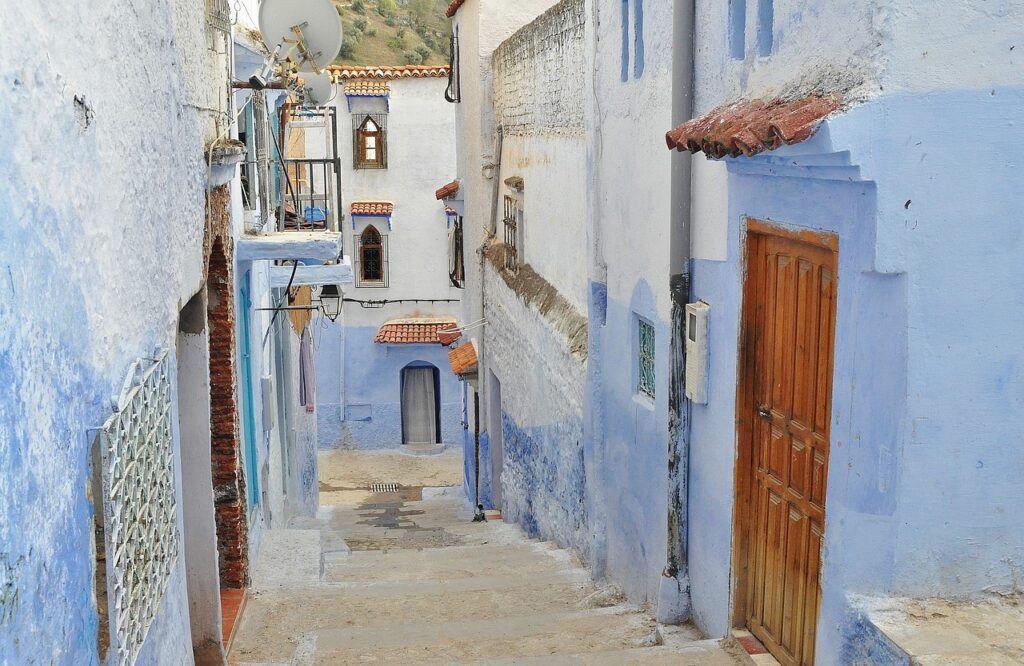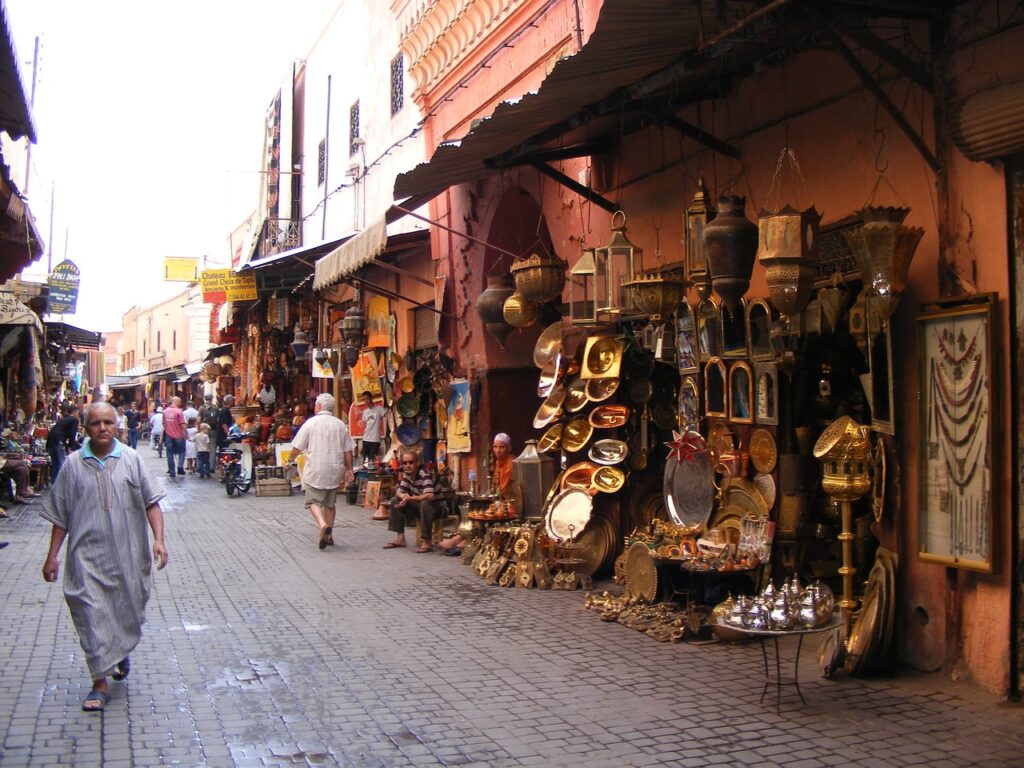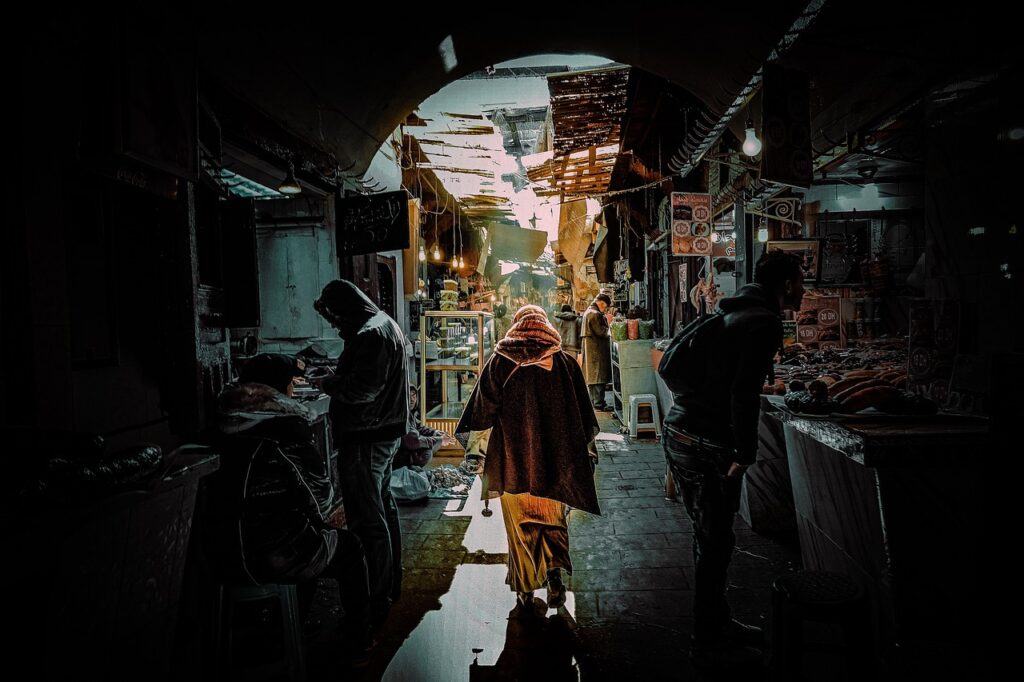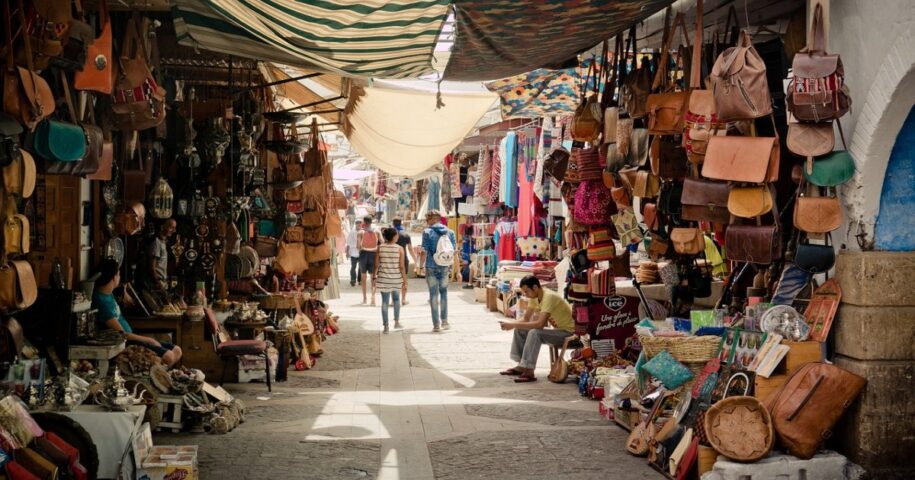A lot of people who have never been to Morocco before are confused by the words “Souks” and “Medinas.” This article by Touring In Morocco will help differentiate between the two words.
What is a Medina?

The medina is the old part of a Moroccan city that dates back to the Middle Ages. Behind a wall, the old city gates called Babs are the only ways to get inside. Most of the houses are traditional styles that do not have windows and are painted in a color that is unique to that city. In Marrakech, the medina is orange-red, in Chefchaouen it is blue, and in Essaouira it is white.
Rarely are there real roads in the Medinas. Most of the time, there are pretty small streets that people, motorbikes, donkeys, and lots of people walking share. They are not organized in a way that makes sense, just like in old European towns. It can feel like going through a complicated maze sometimes.
Motor vehicles are not allowed in the medina of some cities. Fes is one such city. The main part of Fes, which is also known as Fes El Bali, is so big that it is the world’s largest urban area without cars.
In the medinas, you can find a lot of nice Riads. But keep in mind that this could mean you have to take your bags from the closest Bab because that is as close as the taxis can get.
What is a Souk?

To put it simply, the souk is the market. Sometimes it is an outside area where the souk takes place once a week. People with goods to sell come from far and wide in cars and set up tables to sell them. In the bigger cities, it is a permanent building that is open every day.
Many places, both in rural areas and in the newer parts of bigger cities, have souks once a week. People sell fresh fruits, veggies, meat, and other goods there. Sometimes there are also things like ceramics and kitchenware. In the Merzouga Desert, you can see women out only at the Friday souk.
Nowadays, in bigger, more touristy cities, the word is also used for the parts of the medina where people mostly shop for souvenirs. Different kinds of goods are sold in various parts of the souks in Marrakech. A souk for rugs, a souk for spices, a souk for metalwork, and a souk for leather.
These places are sometimes covered to keep the sun and rain off of them. It is easy to get lost in the souk because the alleys are often small, under-lit, and full of people.
In Essaouira, Chefchaouen, and other smaller towns, the souk and medina are great places to buy gifts. You can get better deals there than in Marrakech or Fes, and sellers will bother you as much, if at all.
So What is the Difference Between the Souk and the Medina?
So to sum it up, a souk is the market, and a medina is the old part of a city.
There are a lot of sights, sounds, and smells in the souks that can be overwhelming. Along the small streets, people are selling everything from jewelry and crafts to spices and textiles. People from all over the world go there to bargain, shop, and enjoy the lively environment.
A medina, on the other hand, is like going back in time. It is the historic center of the city and is often ringed by walls that are hundreds of years old.
Tips on Exploring the Souks and the Medinas in Morocco

Wandering around and getting lost in the narrow streets is one of the best ways to see the medina. You will be amazed by the secret gems you find along the way.
In the souks, people often bargain over prices, so be ready to do that to get the best deals. It is a part of the experience, and if you keep an open mind, it can be fun.
Along the way, do not forget to try some of the area’s special foods. In the medinas, you can find a wide range of tastes, from freshly squeezed fruit juices to tasty tagines.
Lastly, when you go to the medinas and souks, you should show respect for the culture and customs of the area. When you talk to people in the area, be polite, wear proper clothes, and ask for permission before taking pictures of them.


Leave a Reply